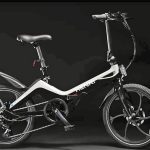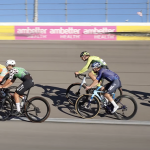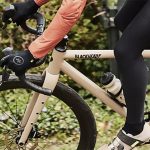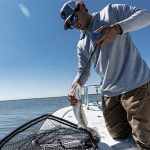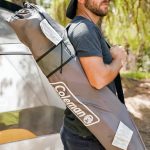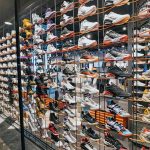Wolverine World Wide exceeded Wall Street earnings estimates for the fiscal second quarter ended June 18 but WWW shares still fell nearly 8 percent for the week as investors punished the company for maintaining previous guidance. Some analysts were expecting a more bullish outlook for the year.
Wolverine World Wide revenues jumped 20.1 percent to $310.1 million in the fiscal second quarter, driven by double-digit revenue growth for all brand groups, the consumer direct business and across all major geographic regions. Fiscal second quarter earnings soared 39.1 percent to $24.0 million, or 48 cents a share, exceeding Wall Street’s consensus estimate of 46 cents a share.
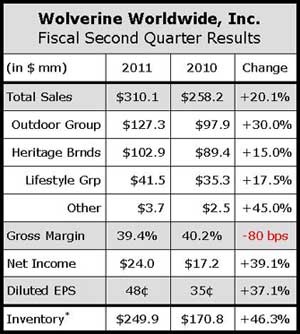
Outdoor Group revenues grew 30.0 percent to $127.6 million from $97.9 million a year ago.
Blake Krueger, Wolverine World Wides’s president and CEO, said the Merrell brand grew at a “very strong double-digit pace,” led by the expansion of Merrell Barefoot in existing and new distribution channels. The Barefoot collection, launched in February, accounted for about a third of the growth in unit volume for Merrell Footwear.
Krueger noted that the Barefoot line “has quickly become the most successful product launch in the company’s history. Merrell Barefoot is selling through very well and has allowed the brand to access the influential specialty running shops.” He further noted that the Barefoot collection is selling well across ” sit-and-fit and knowledgeable” environments, citing REI, Nordstrom, shoe independents and outdoor specialty as examples. He added, “The sell-through there has been very good, which bodes well for the future.
But the CEO also noted that Merrell’s core product segments continue to grow, and he believes “no brand is growing faster in core hiking and light hiking categories than Merrell this year.”
The Merrell brand now has over 1000 dedicated shop-in-shops and almost 160 concept stores around the world. Krueger also noted that Merrell apparel had an “outstanding performance” with backlog ahead “very strong double-digits.”
Krueger said Patagonia Footwear “also had a great quarter,” delivering strong double-digit revenue growth led by a triple-digit growth in hiking. Chaco grew modestly in Q2 despite the cold and rainy spring in some parts of the U.S., which resulted in a soft sandal season.
Krueger said the Outdoor Group “continues to be the company’s largest revenue and earnings contributor.”
Lifestyle Group (Hush Puppies, Sebago, Cushe and SoftStyle), revenues grew 17.5 percent to $41.5 million. Cushe, the action sports-inspired brand acquired last year, racked up a triple-digit revenue increase in the quarter and is currently among Nordstrom’s top five best-selling men’s brands.
Sebago, which saw double-digit growth, was aided by the success of its Artisan and Filson collaborations that led to the creation of pop-up shops in Q2 at Fred Segal, Ubiq, Sportie LA and other upscale chains. A second Sebago store will open on London’s Regent Street this fall.
Hush Puppies recorded strong double-digit revenue increases in its European and international distributor businesses. In the U.S., a focus on higher-margin and better-grade distribution is proving successful, helping drive a 400 basis point increase in the brand’s domestic gross margin in the quarter.
The Heritage Group (Wolverine, Caterpillar Footwear, Bates, HyTest and Harley Davidson Footwear) grew revenues by 15 percent to $102.9 million. Strong double-digit growth from the consumer-direct business was partially offset by softness in the company’s leather business. Caterpillar Footwear saw strong double-digit revenue growth in each of its major geographic regions, aided by product collaborations in both its work and lifestyle collections.
The Wolverine brand continues to grow market share in the core U.S. work segment while building momentum in its more fashionable rugged casual business with the premium-priced 1000 Mile and 1883 collections.
Other segment revenues jumped 45 percent to $3.7 million, bolstered by mid-single-digit comp gains across its owned-retail network, an increase in store count to 92 at quarter-end and continued very strong organic growth from e-commerce, including four new consumer websites. That more than offset lower revenue from its Wolverine Leathers business.
Gross margin eroded to 39.4 percent of sales in Q2 from 40.3 percent in the year-ago period. The decline was almost completely attributable to temporary issues related to its own manufacturing operations. After corrective actions, management expects “significantly improved results” over the balance of the year.
The other impacts on gross margin, including foreign exchange, selling price increases, product cost and freight increases, and brand and channel mix, netted to essentially equal to the prior year.
Other highlights of the quarter included operating expenses reaching 28.6 percent as a percentage of revenue, down from 29.7 percent in the prior year. That helped lead to a record operating margin of 10.8 percent.
Wolverine’s backlog was up 13 percent with “substantially positive backlogs” across all three operating groups offsetting lower backlog from its Leathers business. Management also said it continued to increase its marketing spend behind key brands at a double-digit clip.
The company reaffirmed both its full-year revenue estimate of $1.38 billion to $1.42 billion (representing growth of 10.5 percent to 13.7 percent) and its EPS estimate of $2.40 to $2.50 (representing growth of 10.6 percent to 15.2 percent versus the prior year’s adjusted earnings per share and growth of 13.7 percent to 18.5 percent.). Included in the earnings guidance are the outlooks for flat full-year gross margin and modest full-year operating expense leverage.
Asked about possible acquisitions in the Q&A session, Krueger said Wolverine continues to explore acquisitions, particularly given its success growing added brands in the past.
Said Krueger, “We are constantly looking for the right fit with the company. It could be domestic, it could be offshore. It could be footwear, it could be apparel. But there has been a lot of M&A activity on both the retail side and the brand ownership side, and probably dont see that slowing down in the very near future.”


